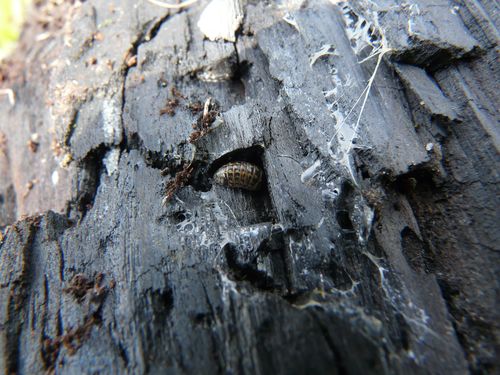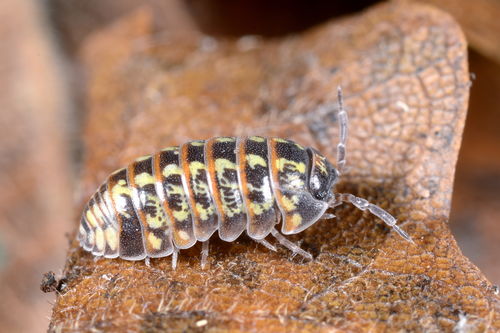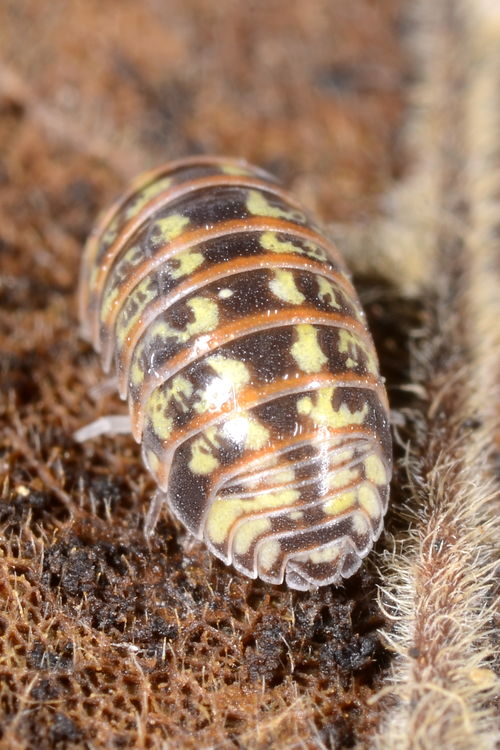Armadillidium pulchellum: A new pill-woodlouse for Worcestershire
Brett Westwood
On May 19 2014, I visited Kingsford Country Park on the Worcestershire /Staffordshire border. This is mainly acid heathland on New Red Sandstone colonised by birch and planted with Scots Pine. Areas of the birchwood have been cleared recently to encourage reptiles and heathland birds.
In a cleared area where Wavy Hair-grass(Deschampsia flexuosa) has recolonized, I turned over a burnt birch log left after a fire. Under it were numerous woodlice(Oniscus asellus and a smaller creature which looked like a tiny burnet moth larva, about 4mm long and striped in yellow. Only when photographed (01) was I able to see that it was a brightly-patterned pill-woodlouse and one of two local species, Armadillidium pulchellum or the rarer A.pictum. Neither has been recorded as far as I knew in Worcestershire, so I kept the specimen and gave it to John Bingham to photograph. His excellent photos (02 & 03) revealed the bright colours and characteristic features and I was able to send them to Steve Gregory of the British Myriapod and Isopod Group who confirmed the specimen as Armadillidium pulchellum from the chamfered edge to the first pereonite segment.
This species occurs locally in the north and west of the UK and Steve Gregory commented that the Kingsford record bridged a gap between the Welsh and Peak District sites. The typical habitat for A. pulchellum is dry calcareous grassland, though in Devon and parts of Wales it favours overgrown heaths, bracken, stone walls and oak woodland. In southern and eastern England where it is rare, it is associated with heathland often where conifers have been planted. Although it was once thought to be very scarce, records have increased as naturalists become aware of its identity.
It is a very small creature just 2mm diameter when rolled up, but worth looking for in other parts of Worcestershire especially on heaths or in dry open woodland. Careful separation is needed from Armadillidium pictum which is much rarer, but may occur in the north or west of the county.
Images
01 Armadillidium pulchellum at Kingsford. Brett Westwood
02 Armadillidium pulchellum at Kingsford. John Bingham
03 Armadillidium pulchellum at Kingsford. John Bingham


